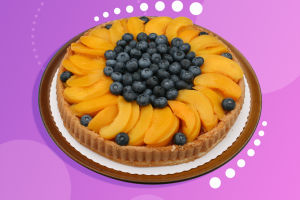There are two main parts to dumplings, the dumpling skin and the filling, and it is best to use medium gluten flour when making the dumpling skin for the following reasons.
Flour has high gluten flour and medium gluten flour, so why use the latter and not the former?
The difference between high gluten flour and medium gluten flour, the most essential difference between them, is that the protein content of the flour is different.
Therefore also caused by the difference in its characteristics.
High gluten flour, refers to the protein content of about 13.5% of the flour.
Generally speaking, as long as the protein content of the flour is higher than 11.5%, can be called high gluten flour.
Medium gluten flour, on the other hand, is a flour with a protein content of about 8%-11.5%.
The most essential difference between high-gluten flour and medium-gluten flour is that the former has a higher protein content and higher gluten.
If you use high gluten flour to make dumpling skin, although the dumpling skin made tougher, more resistant to cooking, not easy to cook.
But then, there is a taste easy to harden, not smooth enough to eat the problem.
If you use medium gluten flour to make dumpling skin, the tenderness between high gluten flour and low gluten flour, the dumpling skin does not have the problem of easy to harden the taste.
But also does not appear to be easy to cook rotten, cooked, so the dumpling skin made just right.
Therefore, it can be concluded that it is better to use medium gluten flour to make dumpling skins, which are not easily cooked and do not have a hard texture.
There are many different kinds of dumpling fillings, both vegetarian and meat, depending on personal preference.
The method of cooking dumplings is also very simple.
Step 1: Take a moderately sized pot, add the right amount of water, add some salt, and bring it to a boil over high heat.
Step 2: When the water boils, you can put the dumplings.
Hold the dumpling plate in one hand, pick up the dumpling with the other hand and put it into the pot, taking care not to let the water splash out and burn your hands.
Don't put too many dumplings in the pot at once, just one plate's worth.
Step 3: After all the dumplings are in the pot, use a wooden spatula to go deep into the bottom of the pot and gently stir a few times to prevent some of the dumplings from sticking to the bottom of the pot.
Then cover the pot with a lid and cook for about 20 seconds, with the water boiling again anyway.
Step 4: Open the lid at this point, you can see signs of dumplings floating slightly, again using a wooden spatula deep into the bottom of the pot, gently stirring.
So that the dumplings float up and do not stick to the bottom of the pot.
At this time, you can add a little cold water into the pot, cover the lid, and continue to cook until the water boils.
If the dumplings are purely vegetarian, they are ready to be served at this point.
If it is a meat-filled dumpling, then continue with the following steps.
Step 5: Add cold water again, do not cover the pot, and cook until the water boils.
Add a little more cold water, let the water boil again, and the dumplings are ready.


